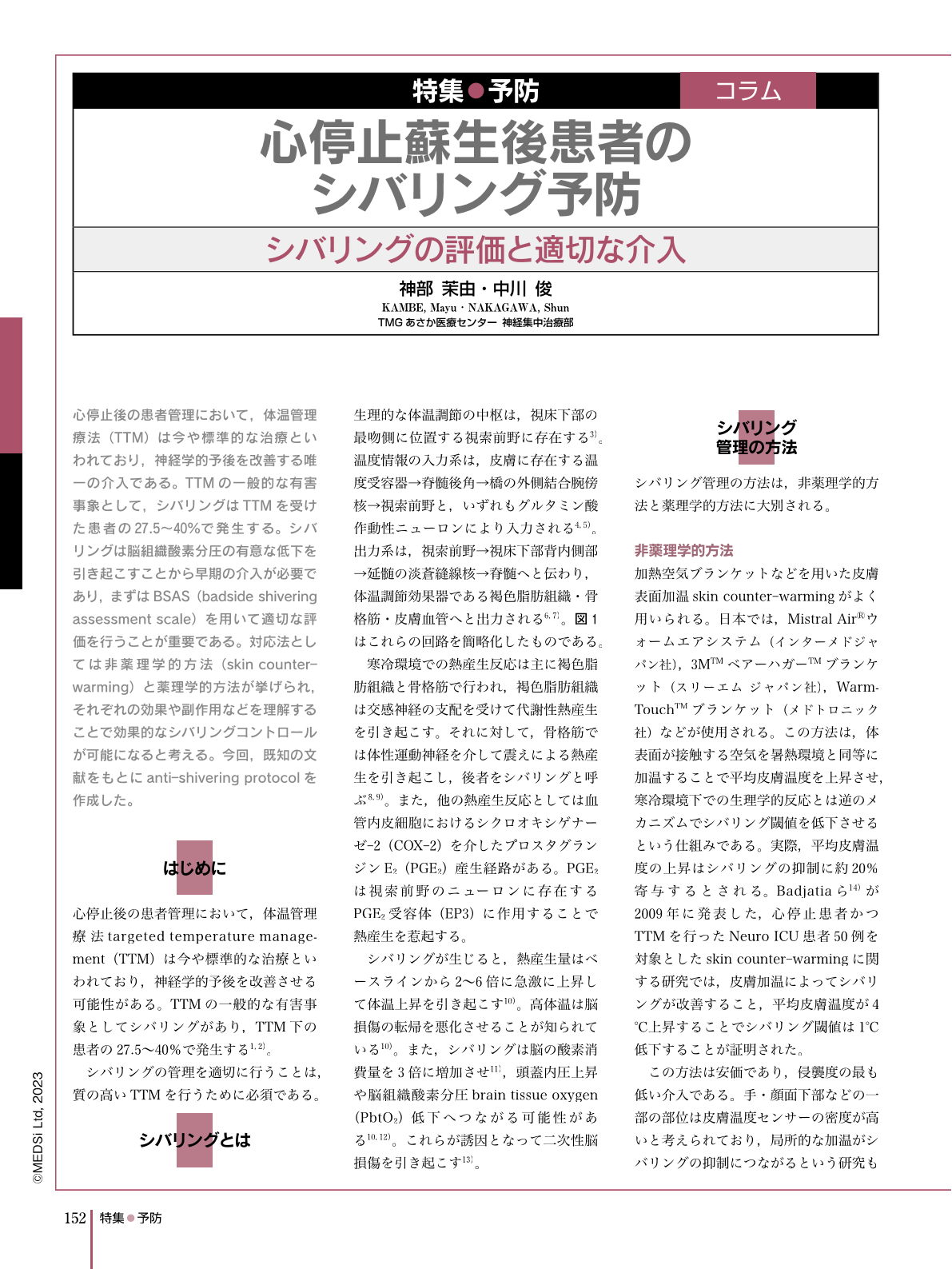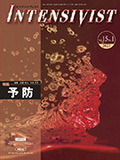Japanese
English
- 有料閲覧
- Abstract 文献概要
- 1ページ目 Look Inside
- 参考文献 Reference
心停止後の患者管理において,体温管理療法(TTM)は今や標準的な治療といわれており,神経学的予後を改善する唯一の介入である。TTMの一般的な有害事象として,シバリングはTTMを受けた患者の27.5〜40%で発生する。シバリングは脳組織酸素分圧の有意な低下を引き起こすことから早期の介入が必要であり,まずはBSAS(badside shivering assessment scale)を用いて適切な評価を行うことが重要である。対応法としては非薬理学的方法(skin counter-warming)と薬理学的方法が挙げられ,それぞれの効果や副作用などを理解することで効果的なシバリングコントロールが可能になると考える。今回,既知の文献をもとにanti-shivering protocolを作成した。
Targeted temperature management (TTM) is a recommended neuroprotective strategy for coma after out-of-hospital cardiac arrest. Currently, TTM is the only intervention to improve neurological outcomes in the post- return of spontaneous circulation phase of care. Shivering is common during TTM and control of shivering can be challenging if clinicians are not familiar with effective treatment options. Shivering occurs in approximately 27.5% to 40% of patients undergoing TTM. Shivering causes a significant decrease in brain tissue oxygenation, so early intervention is required. It is important to evaluate shivering appropriately using the Bedside Shivering Assessment Scale. Shivering management strategies available during TTM include both non-pharmacological (skin counter-warming) and pharmacological methods. Effective shivering control is achieved by understanding the pharmacological effects and side effects of each drug and method. An anti-shivering protocol was prepared based on existing literature.

Copyright © 2023, MEDICAL SCIENCES INTERNATIONAL, LTD. All rights reserved.


